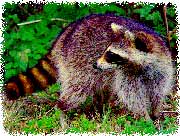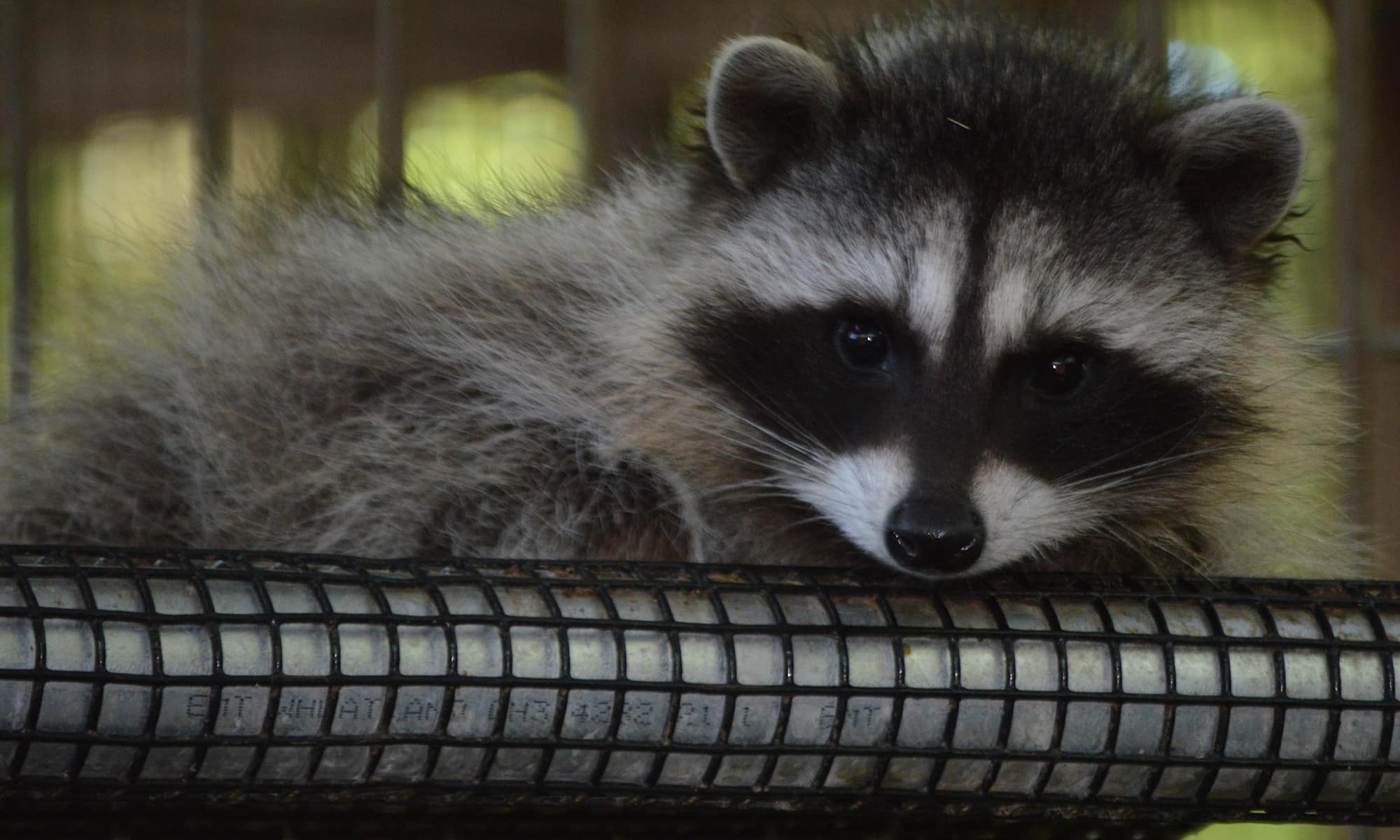
Raccoons are omnivores and feed up on plant foods and vertebrates. Though usually nocturnal, raccoons are sometimes active at daylight to take advantage of available food sources. Raccoons never make dens more than 1,200 feet from a permanent water source. If such dens are unavailable raccoons utilize burrows dug by other mammals, dense undergrowth or tree crotches.

Tree hollows of old oaks or other trees and rock crevices are preferred by raccoons for sleeping, winter and litter dens. Shape and size of home ranges vary depending on gender and habitat, with adults claiming areas more than twice as large as juveniles. Raccoons have acute hearing and can perceive high tones up to 50 – 85 kHz as well as very quiet noises like those produced by earthworms underground. Raccoons are thought to be color blind, however, their eyes are well adapted at sensing green light. It is quite amazing that standing in cold water below 10 degrees centigrade has no effect on these sensitive parts. With their vibrissae positioned above their sharp, not retractable claws, they are able to identify objects before even touching them. The hyper sensitive front paws with five freestanding fingers are surrounded by a thin layer of callus for protection. Raccoons have extremely sensitive front paws. Raccoons cannot run fast or jump very far as they only have short legs, however, raccoons can swim at around 4 miles per hour and are able to remain in water for several hours. Both their forepaws and hind feet have five toes. Raccoons have plantigrade feet (heel and sole touch the floor) and are able to sit on their hind legs to examine objects with their front paws. Their tails have alternating light and dark rings. Raccoons have a dense underfur, which accounts for almost 90% of their coat and insulates them against cold weather. On other parts of their body the long and stiff guard hairs, which shed moisture, are usually greyish in color. Their ears are slightly rounded and are also bordered with white fur. This is sometimes know as a ‘bandits mask’. Raccoons have a very distinctive facial mask whereby they have an area of black fur around the eyes which contrasts with the surrounding white face coloring. Raccoons have a bushy tail which can measure between 19.2 and 40.5 centimetres (7.6 – 15.9 inches) in length. Their shoulder height is between 22.8 and 30.4 centimetres (9.0 – 12.0 inches). Raccoons can weigh twice as much in winter than in spring due to fat storage. Usually, male raccoons are 15% to 20% heavier than females. Raccoons have a body length of around 41 – 71 centimetres (16.1 – 28.0 inches) and weigh between 3.9 and 9.0 kilograms (8.6 – 19.8 pounds). During the mid 20th century, raccoons were introduced and are now widespread across the european mainland. The word ‘raccoon’ is sometimes spelt ‘racoon’. The raccoon is a medium sized mammal native to the boreal forests of North America.

The Raccoon (Procyon lotor) is a member of the procyonidae family, a family of smallish animals, with generally slender bodies and long tails.Įxcept for the kinkajou, all procyonids have banded tails and distinct facial markings.


 0 kommentar(er)
0 kommentar(er)
